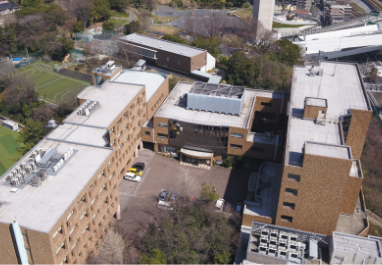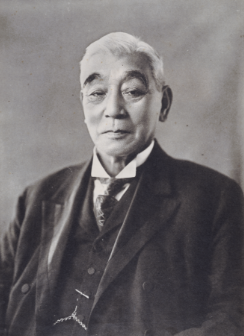HISTORY
Soichiro Asano,
whose supreme business
spirit fascinated
Eichi Shibusawa
"In the coming era, how to enrich Japan. In order to flatten itself as a modern nation, it is essential to have a port where huge ships can be laid sideways.“
"Umu, the creation of landfills for that purpose“
At the wharf of Yokohama Port, Soichiro ASANO was looking at the sea with Zenjiro YASUDA, who was beside him, looking far away into the continent.
In 1913, Soichiro started a reclamation project of 5 million m² in Tsurumi and Kawasaki.At that time, when the common sense was about 30,000m², the world was astonished at the grand plan. Soichiro's strong passion on the business and his outstanding ability to take acftion shocked some people while impressed some others to have them agree with him.
One of such followers is Zenjiro YASUDA, the founder of the Yasuda zaibatsu (conglomerate). He was pulled out for the field survey on a simple travelling outfit without complaints.
That rare businessman Eiichi SHIBUSAWA was also fascinated by and cooperated with Soichiro.
Nevertheless, he did not have the skill of succeeding in the projects demanded by the times from the beginning.
Until the age of 24, when he spent his time in his hometown, he had failed so often that he was ridiculed as "losing Ichiro."
1. Dream is a large merchant
In 1848, Soichiro was born as a son of a village doctor in Yabuta (present-day Himi City, Toyama Prefecture) near Himi-no-cho, which faced Toyama Bay. His father had the family business succeeded to his eldest daughter and husband, and Soichiro, who was six years old, was adopted to his relative, a town doctor. However, he dreamed, "I want to be like the continental merchant of Hokuriku, "Senya Gohei.
"Gohei purchased rice hulls, timber, and other materials, and was a merchant playing an active role from Osaka to Edo and Hokkaido.
Cholera was prevalent in Himi region at age 14. Soichiro, who went to the substitute medical examination, felt unsettled by the situation in which one person died one after another, and returned to his parents ' house.
His real father had already passed away, and his eldest daughter and his wife also died of illness one after another. 15-year-old Soichiro holds his mother and brother, and is excited. He started the shrinking business, hired people, and also challenged the brewing of soy sauce. However, he failed because he could not get the knack of the business.
Next, attention was paid to a rice handling machine which is not yet known in ice viewing. In an attempt to purchase these in large quantities and lend them, he went to Kyoto while peddling sewing needles, but the important rice crop was poor and only debts remained.
It was Zenjiro YAMAZAKI, a local wealthy farmer, who was buying the spirit of Soichiro who saved this predicament. Taking care of him, he was adopted by the husband of Oshoya when he was 19 years old.
However, the original business greed boils. "We want to do wholesale business in a wider world, not just at the job of a village."The company relied on the foster father to establish a product company (it was the first company organization in Japan). They gathered mushiro, tatami mats, goza, etc. from farmers and sold them from villages far to Hokkaido, and conversely, they purchased and sold necessary goods to farmers. Although management was steady, such as paying a payoff to the investor, the heavy purchased rice from a distance was defective due to heavy crops in the Hokuriku region, and the company failed. He was divorced from his adoptive family, and Soichiro returned to his hometown village again.
Zenjiro YAMAZAKI, his guardian, encouraged Soichiro, who can be seen with cold eyes. "If he had 10,000 ryo of capital, he would do a bigger business than his old Zenya Gobei.“Soichiro didn 't get into the room and tried to make a comeback. He advised nearby farmers to use a mushroom machine as a sub-business, and he named "Asano Shoten" in Ice View. The company purchased mushrooms, tatami mats, and other items from farmers, and while the business appeared to be smooth, the borrowed from high-interest lending amounted to 300 cars, and it also collapsed.
It is not Soichiro, but Lost Ichiro. ‘While receiving such words, Soichiro, who was 24 years old, was forced to escape from his hometown.
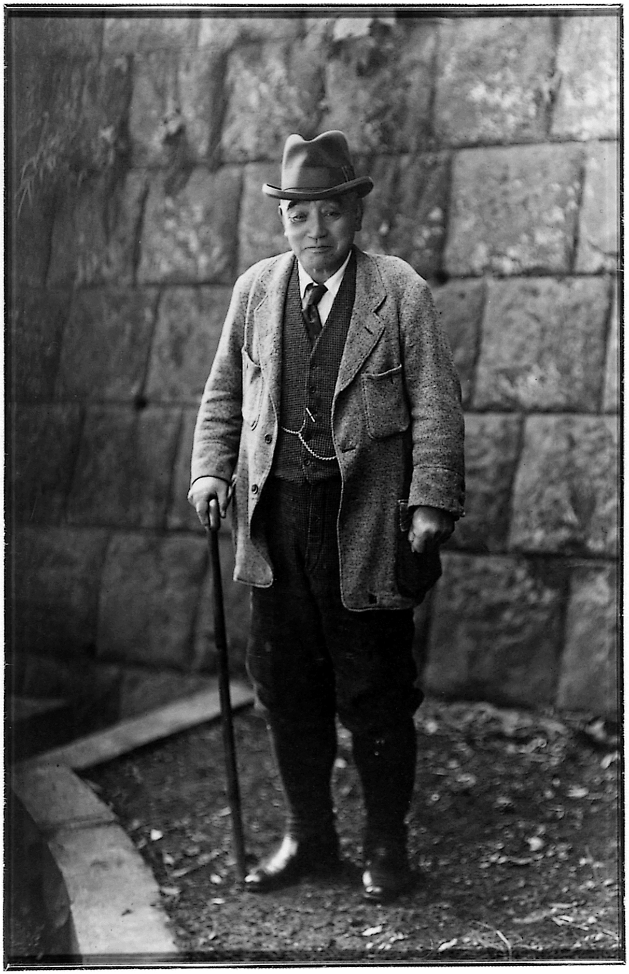
2. To a chilled shop of money,
a bamboo leather on a balance bar,
a firewood and charcoal sale,
and a coal merchant
"Well, cold, cold, a glass, a penny!“
One day before Edo was renamed Tokyo, Soichiro entered Edo and settled down in a boarding house called Otsukaya in Hongo. However, no work was found, and Otsukaya recommended that he start a "cold shop" where he sold cold water springing on the tea water cliffs.
When it was autumn breeze fuku, I asked my acquaintance in Yokohama to help with the business. It was noticed that the bamboo skin wrapping miso, sweets, sushi, etc. was rather expensive. Using the profit of the "cold shop," he purchased a large amount of raw materials for bamboo leather cheaply from an acquaintance wholesaler in Chiba's sister, Kagasaki, and opened a bamboo leather house.
Soichiro walked around selling bamboo skins on a balance stick, and after trying hard for a year, he could afford to live in his pocket. Around that time, 25-year-old Soichiro fell in love with Saku, a 16-year-old daughter who worked hard at a neighborhood store, and got married.
The items handled were spread from the sale of bamboo leather to firewood and coal. The sales of firewood and charcoal was taught as "the preparation of the bunker is essential at first," but there was no leeway of funding, and they bought a large quantity of it "if cheap firewood or charcoal could be sold immediately," and they carried it all to the Kanagawa Prefectural Government and sold it.
In some cases, he was asked for 1250 tons of coal immersed in water and bought it cheaply. At that time, the transportation system was not developed, and the supply of coal was unstable. I sold 200 tons twice as much to NYK, which had been troubled by the shortage of coal, and made a big profit.
Then, the existence of the coal trader Soichiro became widely known in Yokohama. Customers extend from prefectural agencies to customs, police, courts, hospitals, and foreign commercial buildings, and the volume of goods handled also increases. Work also increased, and since 1874 it has been switched to specializing in coal. In 1874, the house was stolen, and in the following year, the house was destroyed by a fire moved from the neighboring house, and the property of ¥30000 (there is a theory that it is about ¥300 million at present) was lost, and other unfortunates continued.
However, the steadily accumulating social credibility and enthusiasm do not disappear. However, the steadily accumulating social credibility and enthusiasm do not disappear.
3. Coke, coal tar, manure.
use any waste
"Which is more expensive, Mt. Noge or the Coke mountain?“
The engineer Suzuki made a proposal to the chief engineer, Saburo UTSUNOMIYA, and decided to carry out the first examination. Chief Engineer Utsunomiya participated in a tour mission to Europe and the United States led by Tomotomo IWAKURA and others, and after returning to Japan, he was the first engineer to succeed in cement production.
If this experiment confirmed that coke was effective as a substitute for coal to burn cement, even if it was not expensive anthracite, Soichiro quickly purchased thousands of tons of coke from the Gas Bureau at a low price and sold it to a cement plant for enormous benefit.
The use of coke entered the ear of Oji's papermaking company (the predecessor of Oji Paper), and likewise purchased a large amount of coke from the gas bureau to use it in the operation of the machine, but it failed. A huge amount of coke is added to the surplus. After knowing it, Soichiro succeeded in replacing the coke with coal.
With this in mind, Soichiro began entering and leaving the paper-making company and attracted a meeting with the founder Eiichi Shibusawa. Eiichi Shibusawa, a businessman, learned about a hot coal merchant in the street and spoke to him through his manager, when he worked black at the landing site of Oji Paper.
"I'm sparing no time in the daytime, so I don't have time except at night.“
Shibusawa has a good interest in the words of Soichiro and tells them to visit in the night. As he was told, after ten o'clock at night, when Soichiro visited, Shibusawa was in bed.
"I asked because you told me to come at night, but I don't have an appointment. Please tell your husband that ten o'clock before is in the evening.“Shibusawa received Soichiro's live and serious remarks very favorably.
Thereafter, we would like to ask for a great deal of cooperation.
Conversion of coke to fuel is waste utilization during gas production. In the same way, the gas station had recovered the residual waste coal tar, but a few years had passed without knowing how to use it.
Speaking of waste utilization, Soichiro built a public lavatory in Yokohama and called himself ' the founder of a common lavatory in Japan. 'Nomura Yasu prefectural ordinance (Governor of Kanagawa Prefecture, later, Minister of Interior and Communications), who was in trouble with the dripping of large and small urinals in the city, talked about whether they could deal with it in a redundant conversation. Soichiro established 63 public lavatories in the city on the condition that they were hygienic.
Pumped wastes (manure) led to fertilizers, with substantial benefits year by year, and public health in the city was greatly improved. Around 1879, they gained enormous benefit and social confidence through the use of unnecessary goods.
Coal tar was sold around 1881 to produce feathers as a raw material for carbonic acid, which is a disinfectant for preventing cholera. Here too, we have obtained considerable wealth.
Thus, Soichiro was sure to be equipped with funding, credibility, and competence as a business operator, but that would be the foundation for the next leap.
4. Expand the stage
with the cooperation
of business leaders
Eiichi Shibusawa and
Zenjiro Yasuda
In 1881, the government, which was poorly financed by post-war spending and other reasons, began to pay down the
private sector in the government industry. Soichiro wanted to lower the Fukagawa Cement Plant, which he had been
focusing on for a long time, and asked Shibusawa for cooperation. At the beginning, the cement business, whose demand
was limited, was opposed earlier, but was driven by the enthusiasm of Soichiro, and Shibusawa persuaded the main
road.
"Asano is Mitsui. Although it is not a known person like Mitsubishi, it is a great student, and if he is paid down, he
will always work without distinguishing between daytime and nighttime. The cement plant will also become large," says
Shibusawa's guarantee that the wage will be lowered at the beginning. The chief of the Engineering Department at that
time also stated as follows. "Mitsui has said that Mitsubishi would like to be a berth in the warehouse, but Asano's
Ohshi, who intends to drive machinery and inherit the intention of the government industry, has to buy it for
you.
The government industry is only an original sample, so I believed that it would be very beneficial by looking at the
sample, and if only the private people who could imitate it, then the purpose of the government industry was halfway
reached.“
Thus, the cement plant was left to Asano in 1883 under the guarantee of Eiichi Shibuzawa. Work time was extended, and
the manufacturer took a dual business system even though it was sold, and he entered the factory from 5 o'clock in
Asano's own morning, and worked until late at night, encouraging the workers. Efficiency has grown up, and in 1884 it
was officially paid down to Asano, and the Asano Plant was established. In this way, the government-run cement plant
disbursement to Asano became No. 1 in disbursement to the private sector. Since then, as Soichiro looked forward, the
demand for cement such as port construction and railways has risen year by year, and it has grown to be Japan's
largest cement company through further improvement and enhancement of facilities and merger with other
companies.
In 1898, with the support of Zenjiro Yasuda, the founder of Shibusawa and Yasuda Zaibatsu, he made Asano Cement, a
joint venture, and achieved rapid growth. Yasuda was a fellow-native who went to Edo at the age of 20 with the aim of
becoming a ' one thousand-ryo-bunja. ‘As a business operator in Asano, he fell in love with his chest and arms, and he
began to look at the trouble of funding.
In 1886, the Asano Circulation Store was founded. They gradually purchased obsolete vessels and entered the
industry.
By 1881 to 1894, Asano was involved in various projects of Japan modernization as a businessman, including the sale of
coal in Hokkaido, Takeaki Enomoto, and others. The company also participated in joint transportation operations,
including the development of Iwaki Coal Mine, the lumber industry (Asano Kokobu), the shipping industry (Asano
Kokobu), the shareholder of Dainippon Fertilizer Co., Ltd. (the foundation of the later chemical business), Kihachiro
Okura, Eiichi Shibusawa, and others, the establishment of a Tokyo-made company, the establishment of a private sapporo
barley sake company, the establishment of the Teikoku Hotel, and the establishment of the Asano Petroleum Department.
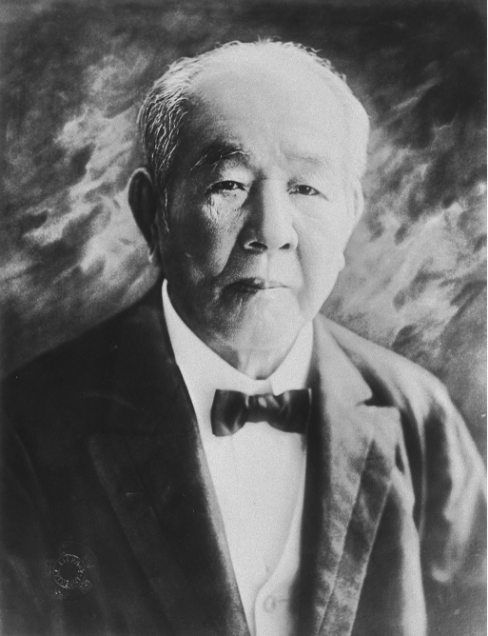
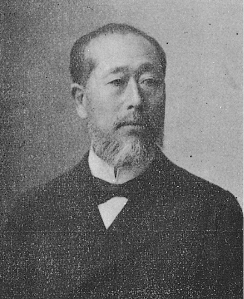
5. First Japanese to acquire
the right
of sea routes and
develop a landfill project
in Tokyo Bay
When the Sino-Japanese War ended in 1895, Soichiro attempted to convert the coastal navigation to that of the past.
"Japan's active stage is overseas. Go to foreign routes to make money. This is the direction that the Japanese shipping industry should proceed.“
At that time, imports and exports mostly depended on foreign vessels. Four old vessels of Asano Circulation Store were sold, and the establishment of a new ocean going company was prepared. It was the San Francisco route crossing the Pacific that was aimed at faintly.
In 1896, he invited prominent economists such as Eiichi SHIBUSAWA and Kihachiro OKURA to a Japanese-style restaurant in Tokyo Hamamachi. When he heard about Soichiro's plan, Zenjiro YASUDA was the first to offer his cooperation. With the support of Yasuda, known for its thrifty family, all participants were decided to participate in the establishment of a new company.
In 1896, Toyo Kisen was launched with the aim of advancing into foreign routes, which had been a dream for many years. The President Asano immediately went to the United States to select the route and purchase a steamer.
San Francisco-Yokohama-Hong Kong routes are the first Japanese to acquire the right of navigation through persistent negotiations with the President of PM in New York. Toyo Kisen opened Japan's first "Pacific Ocean Regular Traffic Route". Next, the company ordered three steamer ships with a capacity of 6000 gross tons to the United Kingdom.
After returning to Japan, the stock price had fallen sharply due to the reaction of the company establishment boom after the Nisshin-Sei War. He was challenged by the cost of building an enormous fleet and was forced to reduce capital and curtail the route plan.
The results of operations on regular routes were higher than expected due to a sharp increase in the number of passengers traveling, but competition with other companies' vessels was intensified, and the Japan-Russo War broke out, and all vessels owned were requisitioned as control vessels. In 1908-1909, Toyo Kisen stocks also crashed and fell into distress. It was Yasuda, who had not fallen into a crowd and had saved the difficulty of paying a huge amount of construction costs. However, the economic world's depression continued and the carry-over loss increased.
"We will make sure to turn it back to black in the next term. If that is not possible, we will provide all our private goods" at the general meeting of the shareowners, and it was also referred to as a "privately-owned speech.“ In reality, we made all-out efforts to turn a profit.
In the aforementioned voyage, Asano has been returning to Japan after a great shock, seeing the actual situation of port facilities and port transport in Europe and the United States, which are proceeding by girder difference from Japan. The port in Japan had no wharf on which large ships could be laid, and it was remarkably delayed in comparison with Europe and America. In fact, there were cases in which the inadequate facilities led to the loss of business negotiations.
The concept of the reclamation of Tokyo Bay, a major project in his later years, was based on the sights and bitterness of his travels. Soichiro submitted a reclamation plan to Tokyo and Kanagawa prefectures several times, starting with the Shinagawa Bay reclamation application, but the feasibility of the grand business plan was questioned and not accepted. So Soichiro sought opinions from experts and worked out a more concrete plan, and went through the cooperation of Zenjiro YASUDA, who sympathized with the plan.
In March 1912, the Tsurumi Landfill Association (now TOA Corporation) was established. Soichiro was able to work boldly because Yasuda told him, "Leave the landfill cost to us.“ This big business was a job that started at the age of 66 for Soichiro.
Zenjiro YASUDA also wrote in his own book, ' The project to build a port in Tokyo Bay is my lodging aspiration. ‘
In 1913, the project to reclaim the coastal area from Tsurumi to Kawasaki to become the Ichidai Industrial Base (present Keihin Industrial Zone) started. People seeking jobs gathered from neighboring countries as well as within the country, and the population of the surrounding areas increased sharply.
This landfill project will be completed in 1928.
Asano-based companies such as Asano Cement Kawasaki Plant, Asano Shipyard & Machinery Works, and Motojiro Shiroishi, who were the husband of Asano, and major shipyards and factories successively entered the land. In order to function as an industrial site, business such as electric power supply, water supply, and railway were also carried out.
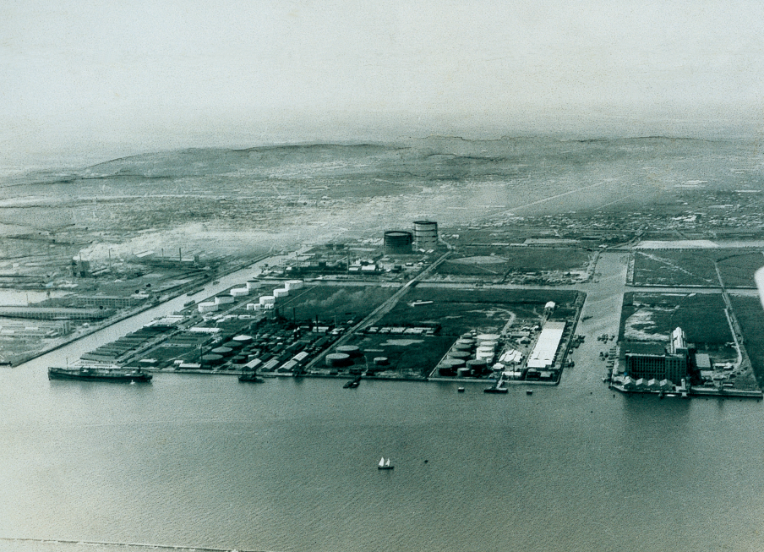
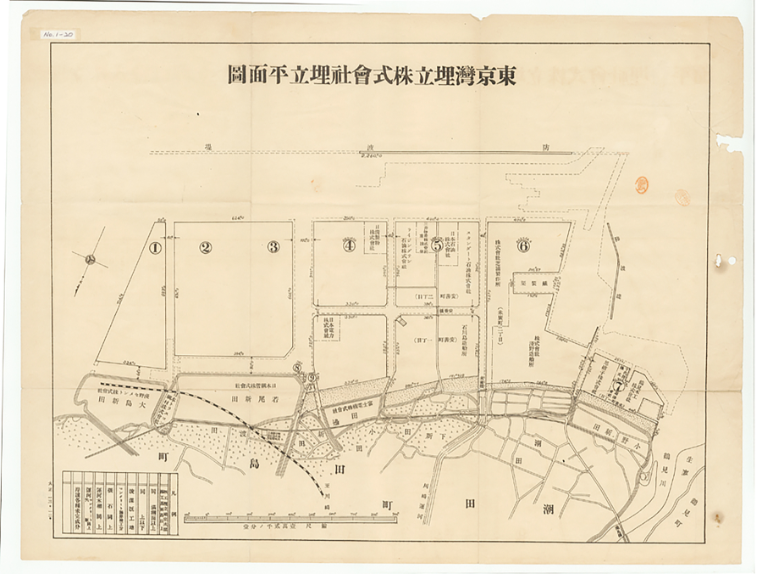
6. Individuals living in manufacturing, national development, and human resource development
Through Taisho from the Meiji period, there were more than 50 companies directly and indirectly involved by Soichiro, and tens of thousands worked under Asano umbrella.
Soichiro regarded the reclamation of the Keihin coastal area as a comprehensive regional development.
For distribution and commuting of employees, Tsurumi Rinkai Railway was established, and hospitals and houses for workers were also constructed.
Soichiro's habit is ' I am a craftsman. ‘Respect those who work, and often show their faces to the local area.
He also appeared in the workshop of a small shipping company in half-pants and boots on his collar, and called out, "Say hello to you today.“Many people invited work crew members to their homes and enjoyed and impressed their wife's cooking.
After many failures and misfortunes, he was able to make a comeback again and again, and he felt a great need to train outstanding human resources who can play an active role in the business world. The importance of "human resource development" was becoming important because of the pursuit of manufacturing and national development.
It was ' Asano Sogo Junior High School (present Asano Gakuen), ' which was opened in Yokohama, the local community in 1920, that embodied this idea.
Kiichi MIZAKI, a former secretary of Soichiro, went to the United States before the school was established and surveyed the educational model "Gary System" that had been practiced in the suburbs of Chicago.
Regardless of the place of origin or hierarchy, the student is an educational method for practicing time allocations in conjunction with academic and labor, such as studying, kinematic plays, and working at a factory producing printed matter in the city. Mizusaki was impressed and convinced of the necessity of integrated junior high school to teach subjects for business such as agriculture, industry and commerce.
In 1923, a vast practical training factory was constructed in the school, and science and technology education was practiced in which practical training of woodworking, metalworking, forging, and machine finishing was made to be an extra-section necessity. In its school lesson and school song, the phrase ‘ Kutenjuki ' (nine turns and turns and turns) which is even the life of Soichiro ASANO is still praised today.
In 1930, Soichiro got sick on his way to Europe and America, and suddenly returned to Japan.
When the name of the disease is told, "That's tough. You have to hurry up with your work," he said, continuing to command the business from his recuperated villa. On November 9, he became a person who did not return. The announcing ceremony was crowded with over 3000 burners. The body was carried to ' Shiunkaku ' called Tamachi Goten Palace. It was not only a guest from abroad, but also a mansion that occasionally invited employees under Asano's umbrella, muddy workers on the scene, and graduates from Asano Sogo Junior High School.
It is said that more than 6,000 people overflowed along the street from Sanda's home to Tsurumi's Soji-ji Temple and saw him off.
The willingness to mention "business irregularity" created a number of companies, which had an impact on the industrial development of Japan. It was the foundation for building a new aorta in the archipelago, which led to the creation of national land and the breakthrough of Japan's industry.
The Keihin Industrial Zone built by Soichiro et al. continues to develop, taking advantage of its sophisticated industrial clusters and changing its shape in accordance with the current trends.
REFERENCE
Demachi Yuzuru, Soichiro ASANO, the ogre of kyutenjukki business(Fuyusha)
Kaku Kozo, Founders of Corporate Nation and Japan: Leadership in the Large Conversion Period (Japan Practical Publisher)
Sumiko Nitta, " That Man, Karuhakazu-Son Soichiro Den Asano, who made modern Japan " (Sunmark Publishing Co., Ltd.)
Chugai Commercial New Paper 1931.5.4
